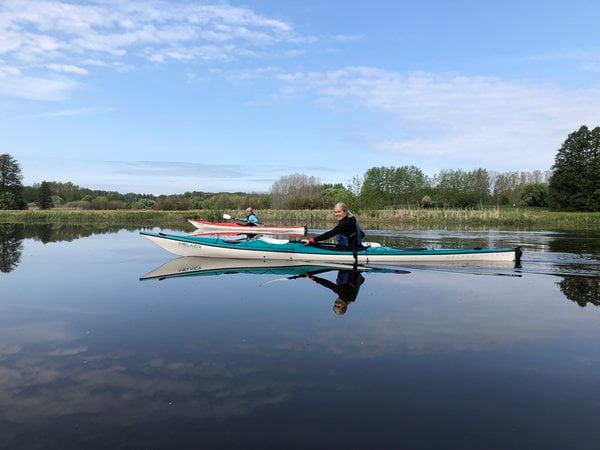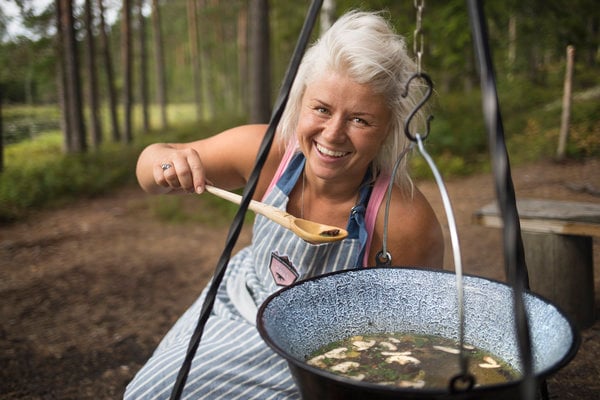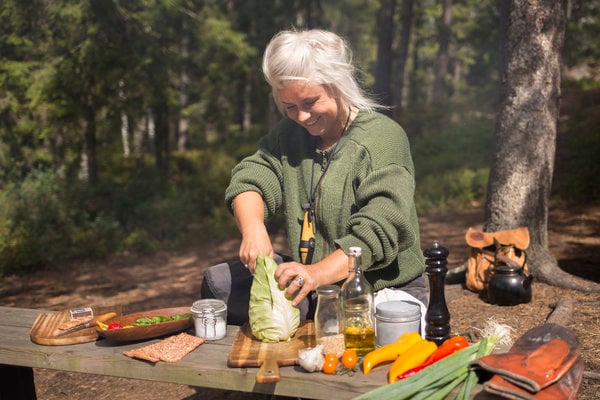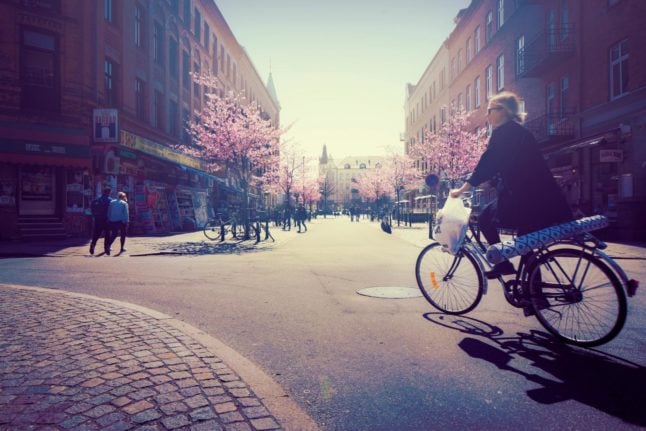With the continuing restrictions on social contact, who hasn’t dreamed of getting away from it all and reconnecting with nature? Uppsala, one of Sweden’s most historic cities can be reached from Stockholm in just over 30 minutes, and offers so much more than just a city break.
We spoke to forager, outdoor chef, and food blogger Elle Nikishkova about some of the best places to explore around Uppsala. She shared tips on the joys of discovering the forest through everything from kayaking to mushroom-picking.
Freedom to explore
In Sweden, everyone is invited to explore the country’s natural beauty under the allemansrätten or public right of access. Your freedom to roam applies whether you want to take a hike, a long rural bike ride, a mountain trek – or even pitch a tent for a night under the stars.
Learn more about the sights and experiences on offer in and around Uppsala
You also have a broad right to pick and enjoy flowers, berries and mushrooms. But take note of some exceptions: nothing can be picked in national parks or nature reserves; and some protected species – including all orchids – should never be picked anywhere.
Elle runs courses teaching foraging and outdoor cooking over a fire through her small company Elles Utemat. Her recipes blend organic local ingredients with things picked in the woods.
“Depending on the season we pick different things,” she says. “Now is good for nettles, ground elder, edible flowers, and rowan leaves.
“On courses, we take different things into our baskets and learn about what’s edible in the forest right now. We can make amazing flower teas or nettle soup with violets.
“In Uppsala and further south you can find more edible things than in the north. In the north, you have spruce, pine and birch trees but here you get all these amazing fruit trees and flowers on the tree that start blooming and you can try them as well.”
Nature awakens
Elle spent her early years in a city in Ukraine and says her passion for nature began after moving to Sweden aged 10. Living “in the middle of the woods” in Umeå, she would explore the forest with her mother and pick mushrooms.
Spring and the months ahead offer a fantastic opportunity to experience and learn about nature.
“Nature is waking up right now,” says Elle. “Beautiful flowers come out in huge numbers around Uppsala; white, blue and yellow flowers. The cherry trees are starting to bloom. In the north, only a few bloom but here you have many and the air fills with these amazing scents.”
Get your guide to nature and outdoor recreation in the Uppsala area
One of her favourite places is Norra Lunsen, a nature reserve south of Uppsala. The area offers many walking trails, which can also be used for mountain biking, and horse-riding trails. In winter, you can go cross-country skiing.
“There’s also a cabin where you can stay,” says Elle. “You can walk there from Uppsala, it’s about 5km to 10km, and there are six beds, a fireplace, fire wood and a water pump.”
She also recommends kayaking and canoeing trips from Uppsala along the Fyris river. Options include going south to Ekoln, the northernmost gulf of Lake Mälaren, or an upstream trip to nearby Ulva Kvarn.

“When the trees are getting greener, it feels almost exotic,” adds Elle. “It’s almost like when I went paddling in Guatemala. Things look so different from the kayak on the water than when you are walking alongside the river.”
Marvellous mushrooms
The mushroom season has started – but the best of it lies ahead. Elle is on something of a mission to teach people in Sweden about the wide variety of edible fungi in the country. So great is her love of mushrooms that she is soon due to launch a book about 20 edible species, packed with recipes and interesting facts.
“My Mum is Russian and in Russia, mushrooms have been an important meat substitute during famine or war,” she says. “In Sweden, people generally know two types and walk straight past all these amazing varieties.”
A century ago, she says many Swedes thought mushrooms were “connected to the devil”. Interest is now growing, she adds. But given the dangers, inexperienced foragers should proceed with extreme caution and learn first from experts.

“The first edible mushroom I pick is usually late May or early June,” she says. “The earliest chanterelles come around midsummer and then boletes. Each month brings new things.
“But you need to know exactly what you’re picking. It’s best to go with someone you can ask questions. I learned from people who tell stories that help you remember different flowers or mushrooms and I always look to give people narratives too.”
Her mushroom-picking courses offer rich rewards. Two hours of foraging may yield 10 to 15 edible species. And you can spend the next two hours frying them and savouring their complexities.
“People get quite amazed by the differences in flavour and texture,” she says. “They’ll say one is like popcorn or remember one that tastes like seafood. If you’re vegetarian and want to spice up your diet, mushrooms are a great way to do that and reduce your intake of imported foods.”
Find out more about visiting Uppsala and the surrounding area when the time is right, including the latest information on events and attractions in the area.



 Please whitelist us to continue reading.
Please whitelist us to continue reading.